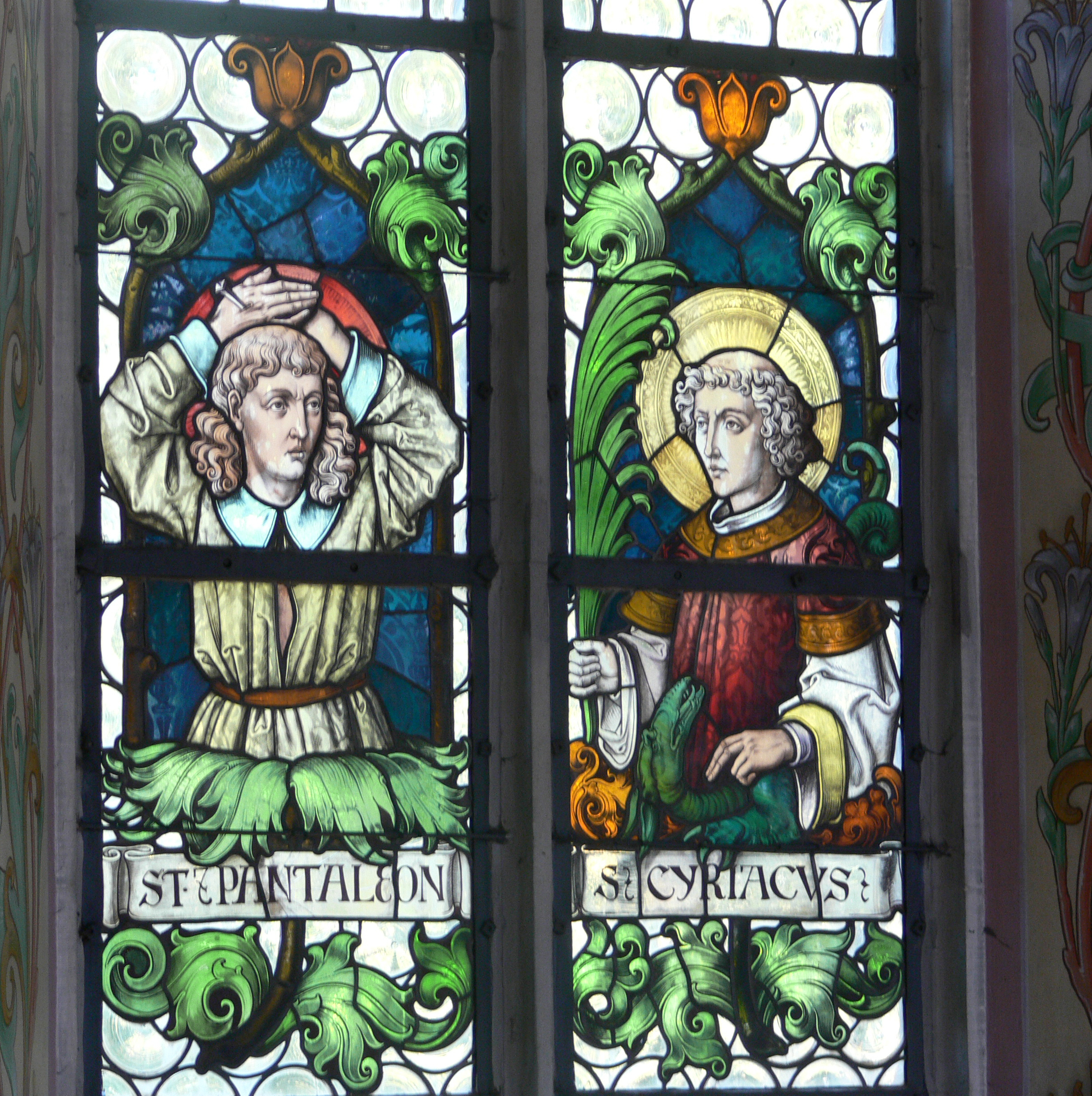"St. Pantaleon and St. Cyriacus," Pfarrkirche, Weitnau, Bavaria
Today's feast honors the martyrs who were thrown to the beasts, soaked in tar and lit as torches, or put to death in some less theatrical manner by Nero in 64 AD. Nero was hoping to shift the blame for the Great Fire of Rome to Christians, a powerless minority in Rome, even though Nero himself had ordered the fire in order to clear land for his Domus Aurea ("Golden House") on the Palatine Hill. Why Christians would want to burn down the capital of the most powerful empire on earth wasn't obvious, nor was it ever explained very convincingly, and in any event Romans saw through Nero's lie. Nero committed suicide in 68 AD to avoid being executed as a public enemy.
Although the martyrdoms it commemorates took place long ago, this feast is practically brand new, having entered the Roman Calendar as part of the calendar reforms of 1969. The pre-reform calendar was crowded with feasts of early martyrs, and the idea behind this new feast was to combine those individual commemorations into a single feast, so that many of the individual feasts could then be dropped. However, not all of the early martyrs' whose feasts were dropped were martyred in Rome, so that part of the rationale doesn't make sense. One suspects that the reformers themselves were more troubled by the crowded calendar than ordinary Catholics were. In any event, many individual feasts of early martyrs were removed from the calendar, and this feast was inserted in their place.
It's sort of like the way Presidents Day replaced the federal holiday of Washington's Birthday and the state holiday of Lincoln's Birthday. A single bland and somewhat ridiculous holiday (do Warren G. Harding and Franklin Pierce really deserve to be celebrated equally with Washington and Lincoln?) takes the place of multiple but more sensible and interesting holidays. One difference is that the new martyrs' feast honors fewer martyrs than deserve it, whereas the new presidential holiday honors more presidents than deserve it.
It is certainly true that the pre-reform calendar included many feasts of early martyrs, though it's not clear why that's a problem. Here's a not necessarily comprehensive or entirely accurate list of the martyrs whose feasts were dropped. The names are pretty exotic ("St. Symphorosa and her seven Sons," "Ss. Cyriacus, Largus and Smaragdus"), but that just makes me curious to know their edifying and probably very entertaining stories:
St. Telesphorus;
St. Hyginus;
St. Felix;
St. Prisca;
Ss. Marius, Martha, Audifax, and Abachum;
St. Emerentiana
St. Martina;
Ss. Faustinus and Jovita;
St. Lucius;
The Forty Holy Martyrs of Sebaste;
St. Anicetus;
St. Cletus;
St. Marcellinus;
Ss. Alexander, Pope, Eventius and Theodulus;
Ss. Gordian and Epimachus;
St. Venantius;
Ss. Primus and Felician;
Ss. Vitus, Modestus, and Crescentia;
Ss. Gervase and Protase;
Ss. Mark and Marcellianus ;
The Seven Holy Brothers;
Ss. Rufina and Secunda;
Ss. Nabor and Felix;
St. Anacletus;
St. Symphorosa and her seven Sons;
St. Christina of Bolsena;
Ss. Nazarius and Celsus;
St. Pantaleon;
Ss. Simplicius, Faustinus, and Beatrice;
Ss. Abdon and Sennen;
Ss. Cyriacus, Largus and Smaragdus;
St. Romanus;
Ss. Tiburtius and Susanna;
St. Agapitus;
St. Zephyrinus;
Ss. Felix and Adauctus;
St. Gorgonius;
Ss. Protus and Hyacinth;
Ss. Lucy and Geminian;
St. Eustace and Companions;
St. Thecla;
St. Placid and companions;
Ss. Chrysanthus and Daria;
St. Evaristus;
St. Bibiana.

No comments:
Post a Comment